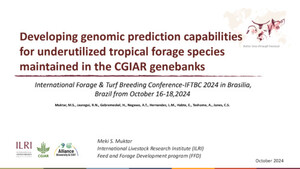
Exploring impacts of vegetated buffer strips on nitrogen cycling using a spatially explicit hydro-biogeochemical modeling approach
Abstract
Agriculture has been recognized as a major anthropogenic source of surplus loads of nitrogen in the environment. Losses of nitrate via subsurface pathways are severely threatening groundwater and surface waters. This study explored the capability of a coupled hydro-biogeochemical spatially explicit model, simulating nitrogen cycling in agricultural soils and the associated fate of excess nitrate subjected to vertical and lateral displacement towards water bodies. Different vegetated buffer strips (VBS) were tested for their nitrate retention capability and impacts on N2O and N2 emissions. The effectiveness of a VBS to remove nitrate by denitrification strongly depends on soil characteristics and hydrological flow paths. Simulated N2 emissions from VBS with high soil moisture were up to twenty-fold compared to VBS where groundwater levels were low. Simulated streamwater nitrate concentrations without VBS were 3.7 mg l−1 and showed a decrease to 0.1 mg l−1 for a 20 m VBS.
Citation
Klatt, S., Kraus, D., Kraft, P., Breuer, L., Wlotzka. M., Heuveline, V., Haas, E., Kiese, R. and Butterbach-Bahl, K. 2017. Exploring impacts of vegetated buffer strips on nitrogen cycling using a spatially explicit hydro-biogeochemical modeling approach. Environmental Modelling and Software 90:55-67.









